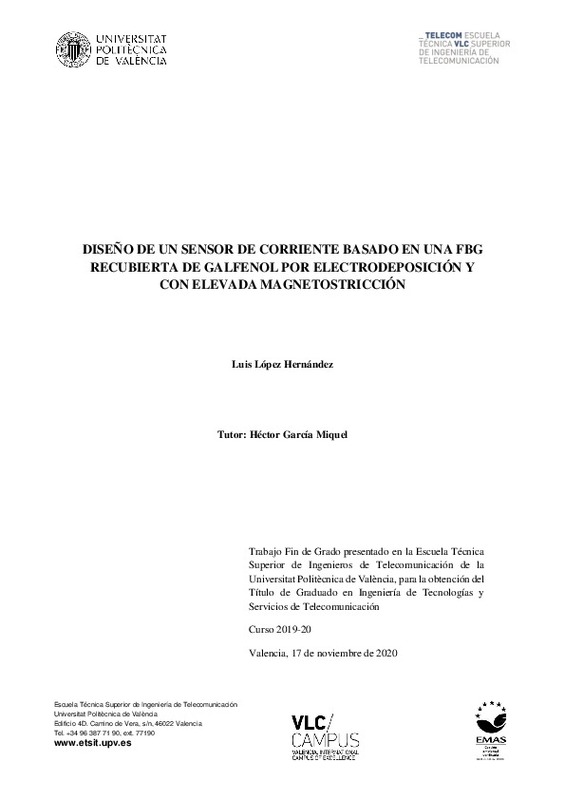JavaScript is disabled for your browser. Some features of this site may not work without it.
Buscar en RiuNet
Listar
Mi cuenta
Estadísticas
Ayuda RiuNet
Admin. UPV
Diseño de un sensor de corriente basado en una FBG recubierta de Galfenol por electrodeposición y con elevada magnetostricción
Mostrar el registro completo del ítem
Lopez Hernandez, L. (2020). Diseño de un sensor de corriente basado en una FBG recubierta de Galfenol por electrodeposición y con elevada magnetostricción. Universitat Politècnica de València. http://hdl.handle.net/10251/156880
Por favor, use este identificador para citar o enlazar este ítem: http://hdl.handle.net/10251/156880
Ficheros en el ítem
Metadatos del ítem
| Título: | Diseño de un sensor de corriente basado en una FBG recubierta de Galfenol por electrodeposición y con elevada magnetostricción | |||
| Autor: | Lopez Hernandez, Luis | |||
| Director(es): | ||||
| Entidad UPV: |
|
|||
| Fecha acto/lectura: |
|
|||
| Resumen: |
[ES] Se diseñara, fabricará y caracterizará un sensor de corriente basado en una fibra óptica con un FBG recubierto de un material magnetoestrictivo. Se dispondrán de las FBG fabricadas por Photonics Research Labs (PRL) ...[+]
[EN] A current sensor based on an optical fiber with an FBG coated with a magnetostrictive material will be designed, manufactured and characterized. FBGs manufactured by Photonics Research Labs (PRL) will be available. ...[+]
|
|||
| Palabras clave: |
|
|||
| Derechos de uso: | Reserva de todos los derechos | |||
| Editorial: |
|
|||
| Titulación: |
|
|||
| Tipo: |
|
recommendations
Este ítem aparece en la(s) siguiente(s) colección(ones)
-
ETSIT - Trabajos académicos [2410]
Escuela Técnica Superior de Ingenieros de Telecomunicación







